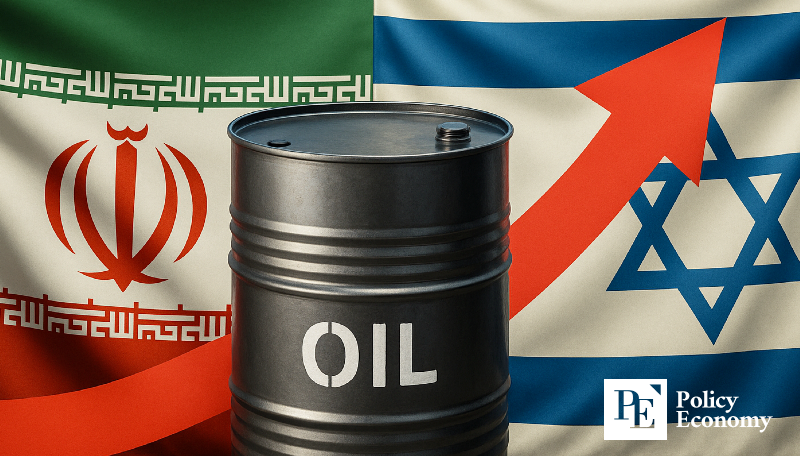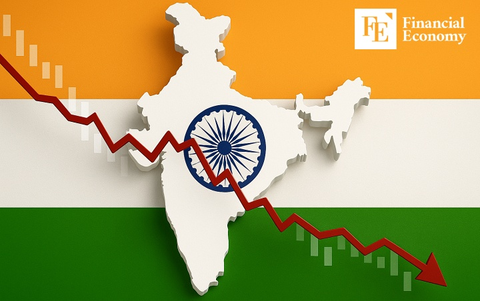Fears of Full-Scale War Surge After Israel’s Airstrike on Iran, Sending Global Oil Prices Soaring by 8%
Input
Modified
Israel Launches Pre-Dawn Airstrikes, Targets Dozens of Nuclear and Military Facilities Prime Minister Netanyahu: 'Operations Will Continue Until the Iranian Threat Is Eliminated' Iran Vows Large-Scale Retaliation, Signs of Escalation Toward Full-Scale War

Tensions in the Middle East have erupted into a dramatic escalation after Israel launched a surprise airstrike on Iran’s nuclear and military facilities. What was initially framed by Israel as a preemptive defense measure has swiftly triggered a retaliatory response from Tehran, setting in motion a chain of events that analysts fear could ignite a full-blown regional war. As both sides exchange attacks and threats, the ripple effects are being felt globally—nowhere more visibly than in the energy markets. Crude oil prices have skyrocketed, with fears that a blockade of the Strait of Hormuz or broader military conflict could send prices to unprecedented highs.
Crude Oil Could Hit USD 130 Per Barrel
The financial impact of the conflict was immediate and severe. According to Investing.com, futures for West Texas Intermediate (WTI) crude oil, set for July delivery, surged 8% to USD 73 per barrel by 1 a.m. U.S. Eastern Time on June 13. At its intraday peak, WTI soared nearly 10%, briefly exceeding USD 74 per barrel—the highest in five months. Brent crude, the international benchmark, climbed in tandem to USD 74.60, also reflecting an 8% jump.
These dramatic price spikes are being driven not just by the airstrike itself, but by intensifying fears that the Middle East—responsible for roughly one-third of the world’s oil production—could descend into prolonged warfare. Iran, in particular, is the third-largest producer within the Organization of the Petroleum Exporting Countries (OPEC). Any disruptions in its output, or attacks on regional transport infrastructure, would jolt the already fragile global oil supply chain.
The most immediate threat lies in the potential closure of the Strait of Hormuz. This narrow chokepoint is responsible for transporting around 20% of global oil shipments, one-third of liquefied natural gas (LNG) exports, and one-sixth of the world’s crude supply. Iran has previously warned that it considers the Strait a strategic lever and could blockade or target tankers transiting through it. South Korea and many other energy-importing nations are especially dependent on this route.
Alarmed by these prospects, global investment bank JPMorgan has reiterated its earlier warning: if the Strait of Hormuz were to be shut down or if military clashes engulf the wider Middle East, crude prices could soar beyond USD 130 per barrel—triggering knock-on effects for inflation, transportation costs, and energy-dependent industries around the world.
Israel’s Preemptive Strike and Iran’s Escalating Retaliation
On June 12, Israel shocked the region by launching a coordinated preemptive airstrike on strategic sites across Iran, including nuclear infrastructure. Israeli Defense Minister Israel Katz declared the strike a necessary preemptive action to neutralize what he described as an imminent threat from Iran. A state of special emergency was also declared. Residents near Tehran reported hearing multiple massive explosions, confirming the scale of the Israeli assault.
The operation, named “Nation of Lions,” aimed squarely at dismantling Iran’s ability to produce nuclear weapons and degrade its missile capabilities. According to Israeli officials, the airstrikes killed several senior figures within the Islamic Revolutionary Guard Corps (IRGC), including Commander-in-Chief Hossein Salami. Additionally, key Iranian nuclear scientists—Mohammad Tehranchi and Fereydoon Abbasi—were also killed. The symbolic and strategic nature of these targets has fueled fears that the attack crossed one of Iran’s most well-publicized red lines.
Israeli Prime Minister Benjamin Netanyahu, in a video address released on the day of the strike, stated the operation’s objective clearly: to destroy Iran’s nuclear infrastructure, missile production sites, and military strength. He further warned that the campaign would continue “for as long as necessary” and justified the preemptive strike by claiming Iran was mere days away from producing up to 15 nuclear bombs. He described this as a direct threat to both Israeli and global security.
According to reports from The Wall Street Journal, Netanyahu had spoken with U.S. President Donald Trump on June 9 to inform him of Israel’s intention to carry out the strike. U.S. officials later confirmed that Israel had shared operational details in advance, signaling close coordination with Washington.
In retaliation, Iran acted swiftly. By early June 13, the Iranian military had launched more than 100 drones toward Israeli targets. A spokesperson for the Israel Defense Forces (IDF) confirmed the drone barrage and responded by stating that over 200 Israeli fighter jets had launched counterstrikes, hitting more than 100 strategic locations across Iran and deploying over 330 munitions.

Iranian Leaders Vow Harsh Punishment as Missile Forces Mobilize
The response from Iran’s top leadership was immediate and unequivocal. In a fiery statement carried by the state-run IRNA news agency, Supreme Leader Ayatollah Ali Khamenei condemned Israel’s attack, describing it as the regime’s most “vicious” act to date. He accused Israel of extending its “filthy and bloodstained hands” to strike Iranian residential areas and warned that Israel had “prepared a bitter and painful fate” for itself. “The strong hand of the Iranian military,” he declared, “will not let this crime go unpunished.”
Khamenei also honored the deaths of IRGC leaders and nuclear scientists as acts of martyrdom, affirming that their successors would continue their mission in accordance with divine will. His words served both as a warning to Israel and a rallying cry to Iran’s military and the broader population.
Iran’s military posture appears to support those words. According to a 2025 report from the International Institute for Strategic Studies (IISS), the IRGC controls over 100 launchers for medium-range ballistic missiles (MRBMs), with ranges exceeding 1,000 kilometers. The country has a vast arsenal of solid- and liquid-fueled missiles, many of which are capable of reaching Israeli territory.
However, Iran’s air force is a known weak point. The nation possesses about 265 combat-capable aircraft, most of which date back to the Cold War and are considered obsolete. These jets would require aerial refueling to reach Israeli targets—a capability Iran can only support with its limited fleet of fewer than five aerial refueling tankers.
Despite these limitations, Iran’s missile forces remain a serious threat. Former U.S. national security official Brett McGurk noted that the Iranian military is capable of launching approximately 30 ballistic missiles every five minutes, with a flight time of just 13 minutes to reach Israel. Such capabilities make any sustained conflict between the two nations potentially devastating, not only for them, but for the entire region and the global economy.





















